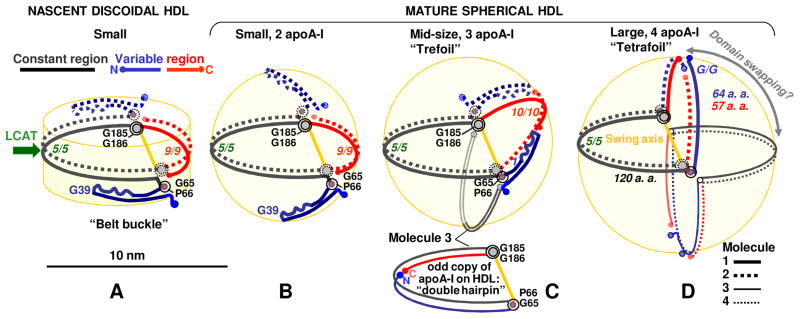Figure 6.
Hypothetical molecular mechanism of structural adaptation of apoA-I to the increasing lipid load in HDL during reverse cholesterol transport. Constant (66-184, in black) and variable regions (1-66, in blue, and 185-243, in red) are indicated. (A) Small nascent HDL (d~8 nm, 2 copies of apoA-I); (B) small mature HDL (d~8 nm, 2 copies of apoA-I); (C) mid-size mature HDL (d~9.6 nm, 3 copies of apoA-I); (D) large mature HDL (d~11.5 nm, 4 copies of apoA-I). Swing axis that, we propose, connects G65, P66 and G185, G186 hinges is in yellow. Odd copies of apoA-I are proposed to adopt a “double hairpin” conformation (C, bottom). Mid-size human HDL can also carry several copies of apoA-II as their second-major protein [51] (not shown). Figure modified from [88].

